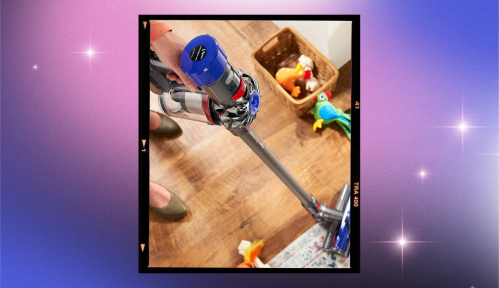Our editors independently select these products. Making a purchase through our links may earn Well+Good a commission
A typical workout equation involves your exercise and subsequent soreness, depending on how hard you push yourself. That soreness, when it happens, indicates inflammation (but not necessarily bad inflammation). That equation can be swapped, though—experts say that certain exercises and recovery habits can actually reduce muscle inflammation.
Experts in This Article
Alexis Chiang Colvin, MD is an orthopedic surgeon with Mount Sinai.
Jeremy James, DC is a chiropractor, certified strength and conditioning specialist, and founder of FitForever.
physical therapist, yoga instructor, and founder of LYT Method
“The inflammation [from muscle soreness] is from your body, which is working to heal the micro-tears or micro-injuries from your workout,” says Alexis Chiang Colvin, MD, an orthopedic surgeon with Mount Sinai. “That’s how you build muscle.”
But, according to physical therapist and yoga pro Lara Heimann, PT, founder of LYT Method, inflammation from exercise is a big indication that your body isn’t prepared to do that movement.
“If you’ve prepared your body well, then you should be able to do high-intensity exercises [without inflammation],” says Heimann. “You might have some residual soreness, which can happen when you use your muscles, but it shouldn’t be that you’re so sore and inflamed that you can’t walk the next day.” That inflammation can happen from a number of causes—from muscle imbalances to improper form—that you can avoid.
Certain forms of movement can also reduce inflammation. “Really good movement will help any inflammation that is existing within the body,” says Heimann. And by really good she means efficient and balanced. Jeremy James, DC, a chiropractor, certified strength and conditioning specialist, and founder of FitForever, echoes this, noting that regular low-to-moderate and moderately-intense exercise can combat inflammation. “When performed in ways that are healthy for your spine and joints, exercise can reduce inflammation,” he says.
How can you determine whether your workout will cause or quell inflammation? Keep scrolling for eight ways to use your exercise and recovery routines to keep inflammation at bay.
1. Stretch
Any body-focused expert will preach about the importance of stretching. It primes your body for your workout, lengthens your muscles, helps with flexibility, and helps to prevent injury. And, guess what: Stretching can help reduce inflammation, too. Dr. Colvin points to a study that shows that just 10 minutes of stretching can do the trick… so that’s yet another reason to not skip that pre-workout warm-up and the post-workout cooldown.
2. Work your core
Your core is the center of your body, which means it holds a lot of responsibility in all of your movements. According to Heimann, having a weak core can actually create inflammation. “Someone might be executing a movement, but they’re not supporting the skeleton,” she says, comparing it to pulling taffy. “If you want to pull taffy, you’re going to be more effective if you have something you’re pulling it from—imagine taffy is being pulled and doesn’t have a strong counter to it.” Core strength enables the rest of your body to move efficiently. “It should be ready to support the body with movement,” says Heimann.
3. Don’t overdo your intense workouts
It can feel really satisfying to slay a grueling workout, but, for inflammation’s sake, you shouldn’t be doing that vigorous of a workout every single day. “High intensity or long-duration exercise can cause chronic inflammation,” says Dr. James. “It’s for this reason that it’s recommended that these types of workouts not be performed on consecutive days, and that adequate recovery is had before the next session.” So throw in some rest days and low-impact workouts to space out your HIIT.
4. Focus on form
You’re supposed to have proper form in your workouts so that you actually work the muscles that are meant to be worked. Another reason? Exercising in improper form can pile on the inflammation. “Form dictates function,” says Heimann. “If you find that every time you exercise, you’re sore and having this inflammation, it’s so important to have a trainer educate you about form.” If you execute your moves correctly, your muscles will work the way that they’re supposed to (and you’ll avoid injury that way).
5. Address muscle imbalances
Working out in proper form goes hand-in-hand with making sure your muscles are balanced, and that certain muscle groups aren’t overcompensating for weaknesses in others. “If your glutes are under-performing in a run, the hamstrings will get overloaded, and you’ll wind up with tightness, inflammation, and soreness in your hamstring,” says Heimann. “These are all kinds of byproducts of overly using one muscle group and under-using another.” To avoid this, make sure that you’re—again—working out in proper form, and be sure to strengthen your smaller muscles, not just your larger ones.
6. Check your posture
Your posture—outside of your workouts—can have a big impact on your workouts and how your body moves in them. “If your posture isn’t great, and you have a tilted pelvis, you’ll be able to run,” says Heimann. “But you’re probably over-using your hamstrings.” That muscle compensation leads to tightness, tension, and, yeah, inflammation. Similarly, if your spine is contracted from working at a desk all day, it’ll be more prone to injury if you go do something like lift weights… which is all the more reason to prioritize proper posture all day long.
7. Incorporate massage
One of the best things to do after a workout session is to grab some sort of muscle-massaging device, which can help to prevent inflammation. “Research has found that massage was one of the things that’s pretty helpful [for muscle inflammation],” says Dr. Colvin. “Getting something like a foam roller or compression sleeves can help to massage out your muscles.” Or you can reach for a percussive therapy device, like a Theragun ($300) or Hypervolt ($300).
8. Take rest days
It sounds obvious, but rest days are key for a number of reasons, including to quell inflammation. “The important point is to not return back [to exercise] too early, even if you really want to push through,” says Dr. Colvin. “If you are feeling soreness, you should definitely try to recover. If you continue to pursue [working the same muscles], you’re keeping that body part in an inflamed state.”
Sign Up for Our Daily Newsletter
Get all the latest in wellness, trends, food, fitness, beauty, and more delivered right to your inbox.
Got it, you've been added to our email list.











